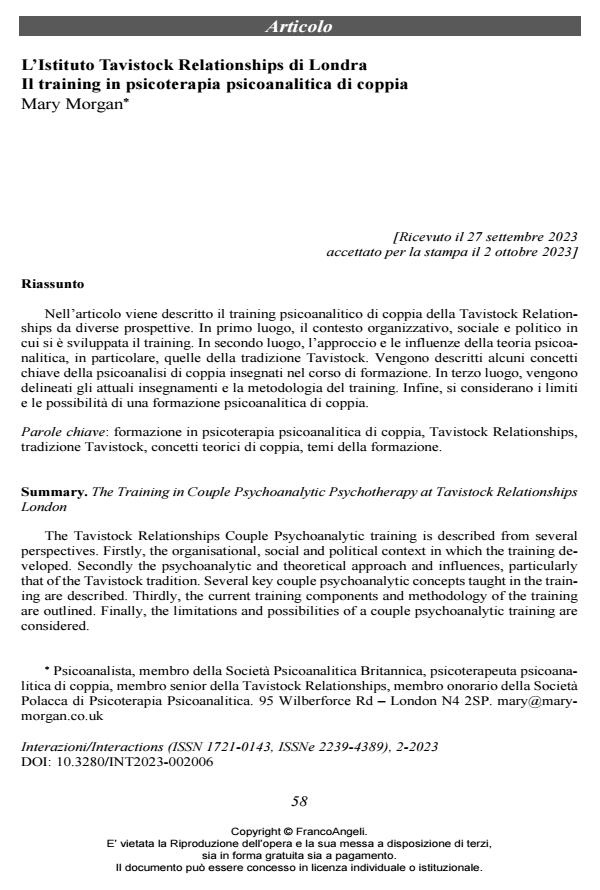The Training in Couple Psychoanalytic Psychotherapy at Tavistock Relationships London
Journal title INTERAZIONI
Author/s Mary Morgan
Publishing Year 2023 Issue 2023/2
Language Italian Pages 13 P. 58-70 File size 189 KB
DOI 10.3280/INT2023-002006
DOI is like a bar code for intellectual property: to have more infomation
click here
Below, you can see the article first page
If you want to buy this article in PDF format, you can do it, following the instructions to buy download credits

FrancoAngeli is member of Publishers International Linking Association, Inc (PILA), a not-for-profit association which run the CrossRef service enabling links to and from online scholarly content.
The Tavistock Relationships Couple Psychoanalytic training is described from sever-al perspectives. Firstly, the organisational, social and political context in which the train-ing developed. Secondly the psychoanalytic and theoretical approach and influences, particularly that of the Tavistock tradition. Several key couple psychoanalytic concepts taught in the training are described. Thirdly, the current training components and meth-odology of the training are outlined. Finally, the limitations and possibilities of a couple psychoanalytic training are considered.
Keywords: couple psychoanalytic psychotherapy training, Tavistock Relationships, Tavistock tradition, couple theoretical concepts, training components.
Mary Morgan, L’Istituto Tavistock Relationships di Londra Il training in psicoterapia psicoanalitica di coppia in "INTERAZIONI" 2/2023, pp 58-70, DOI: 10.3280/INT2023-002006